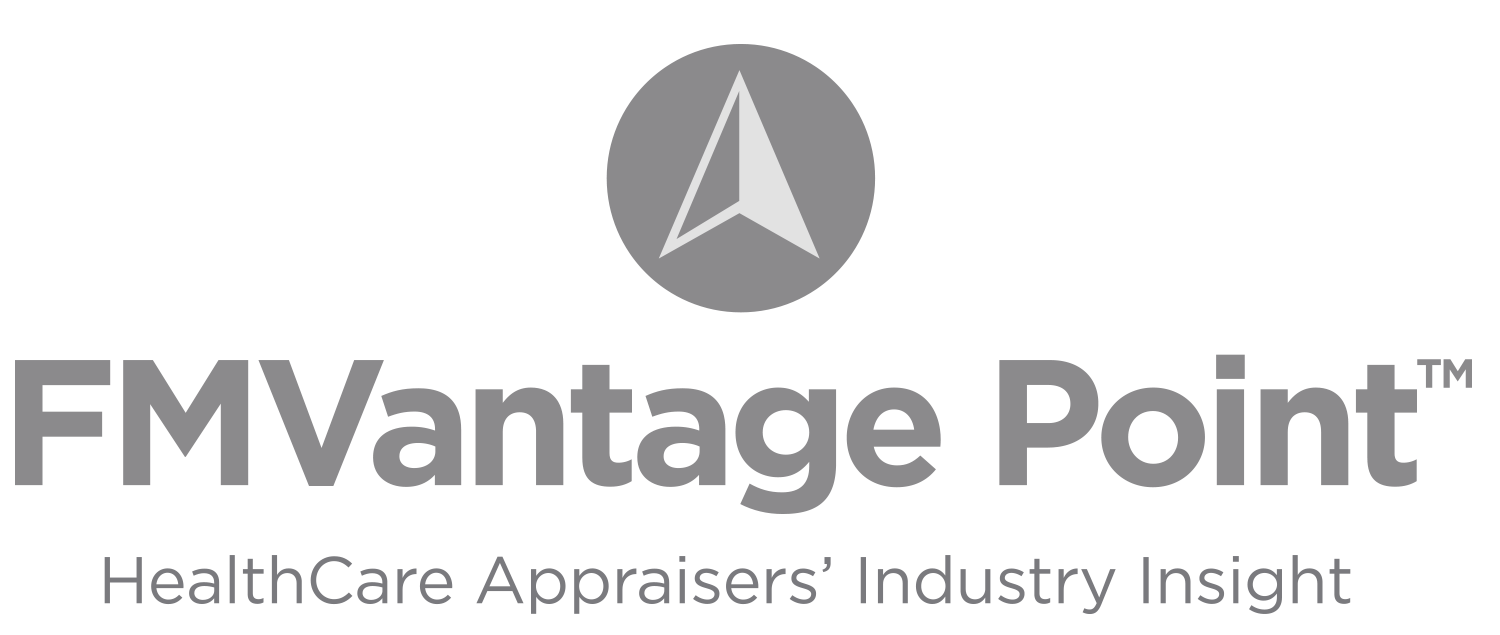
The authors continue to observe a high level of interest in home health and hospice as the sector is expected to benefit from aging demographics, the shift to value-based care, widespread adoption of telehealth, and favorable reimbursement trends. This article provides background information on the home health and hospice segments, and then provides insight into what is driving the increased interest from healthcare providers and investors. We provide a discussion of the outlook for the industry, including how the recently implemented Patient-Driven Grouping Model (PDGM) reimbursement model is affecting the provider landscape, as well as the impact of telehealth. Finally, we discuss trends in the space regarding transactions and valuation.
![]() BACKGROUND
BACKGROUND
Home healthcare is the provision of medical care in the patient’s home following an injury or illness. The patient’s home can range from personal residence, skilled nursing facility, assisted living community, or wherever the patient calls home. Common home healthcare services include patient monitoring, medication management, assessing patient falls, palliative care, identifying diet and nutritional deficiencies, observing mental health, patient education, and functional support such as dressing and feeding patients. In order to qualify for Medicare reimbursement for home health services, the patient must be unable to leave their home without considerable effort, and must require part-time or intermittent skilled care, as certified by a physician. Hospice is a type of healthcare that provides comfort to patients with a prognosis of less than six months to live. In many cases, hospice is provided in a home setting as a type of home healthcare.
Home healthcare agencies consist of a variety of types of providers and non-providers including nurses, therapists and social workers, and care is coordinated with the patient’s physician. Hospice care is provided through many of the same types of providers as home health but can also include religious or spiritual counselors and bereavement specialists. Hospice care can also include services outside of traditional medicine, including animal and music therapy.
![]()
![]()
![]()
![]()
![]()
![]()
![]()
![]()
As of 2019, there were approximately 3.3 million Medicare beneficiaries receiving home healthcare services, and 1.6 million Medicare beneficiaries receiving hospice services. The number of providers in the home health and hospice sector has been steadily increasing since the year 2000. In particular, the number of home healthcare agencies increased from 7,528 in the year 2000 to 11,300 in 2019. The number of hospice providers increased from 2,255 to 4,840 over the same time period. Much of the aforementioned increase has been for-profit entities.[1]


According to CMS, total expenditures for home healthcare[2] in 2019, the most recent year for which data was available, was $113.5 billion. Home healthcare expenditures have increased approximately four to five percent per year for the last several years. Figure 2 presents home health expenditures from 2012 through 2019, as well as projected expenditures through 2028. CMS projects home healthcare expenditures to increase approximately seven percent per year through 2028.
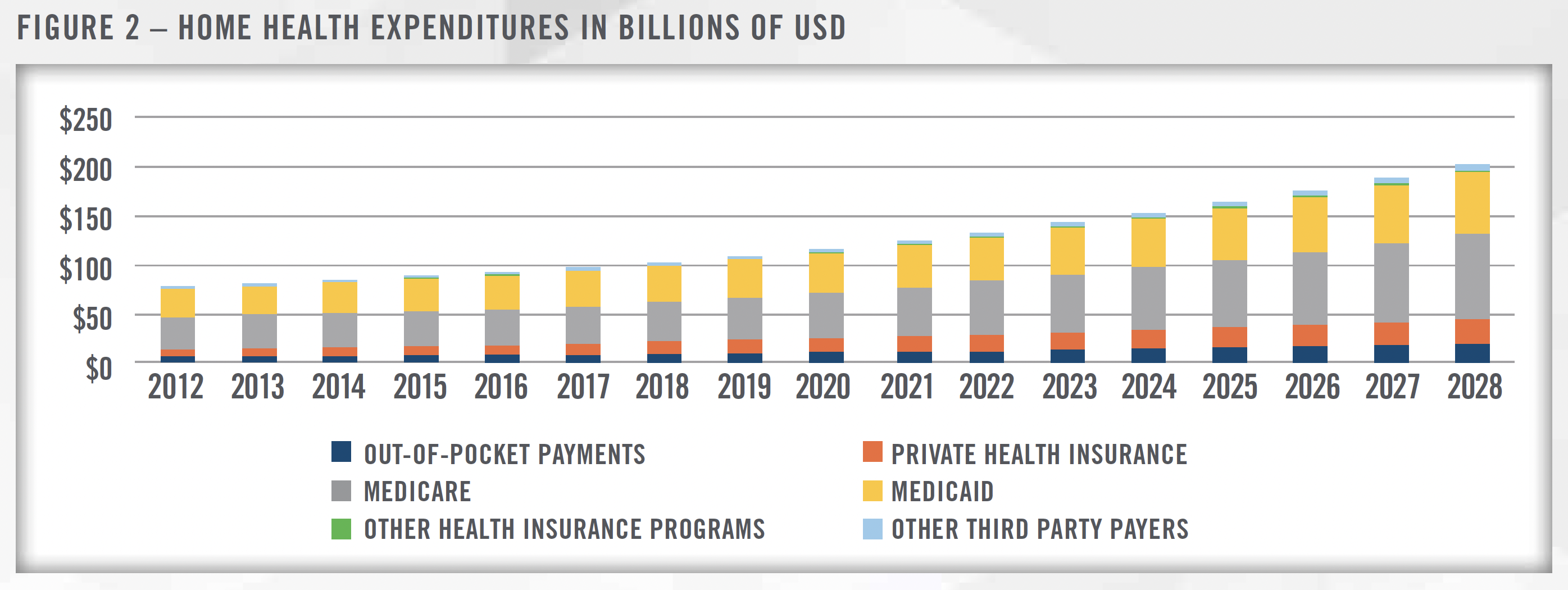

There are many growth drivers impacting the increase in home healthcare expenditures in the United States. Major factors include the aging population, the shift to value-based care and recognition by providers and payors that home healthcare can help reduce readmissions, and the overall push to control costs within the healthcare system. In particular, home healthcare is increasingly utilized to keep elderly patients in their homes as opposed to assisted-living communities. Home healthcare providers are also used as an alternative to primary care physicians, and this trend is expected to accelerate as the shortage of primary care physicians is anticipated to worsen in the coming years.[3]
![]()
![]()
![]()
![]()
![]()
![]()
![]()
![]()
Home Health
Until recently, Medicare reimbursement for home healthcare services was based on 60-day episodes of care. Medicare sets the base rate for a standard 60-day episode, then payment for each episode is adjusted upwards or downwards based on the patient’s clinical and functional needs, as well as the patient’s expected utilization of services. Prior to implementation of the Patient-Driven Groupings Model (“PDGM”) in 2020, there were 153 payment groups into which patients could be classified that determined the adjustment to the base rate. Due to the long timeframe during which care was provided, providers could submit Request for Anticipated Payment (“RAP”) to CMS and receive up to 60 percent of the anticipated reimbursement up front, with the remainder received at the end of the episode.
Beginning in 2020, the implementation of PDGM significantly altered how home healthcare services are reimbursed. Under the new payment model, the number of payment groupings increased from 153 to 432 and are classified based on episode timing, referral source, clinical category, functional/cognitive level, and presence of comorbidities. CMS also eliminated RAP for new providers in 2020 and for existing providers in 2021. The increasing complexity of the payment model and associated coding and billing requirements, as well as the elimination of RAP, is anticipated to lead to a period of consolidation within the industry, although the full impact may have been delayed due to COVID-19 (discussed in more detail in later sections). CMS’s 2022 final rule of the Home Health Prospective Payment System is anticipated to result in a 3.2 percent increase in total payments to home health providers.
In addition to PDGM, CMS recently announced the nationwide rollout of the Home Health Value-Based Purchasing (“HHVBP”) Model, which applies an adjustment to home health agencies’ reimbursement based on certain quality metrics. HHVBP has been tested in several states in recent years and the nationwide rollout will take effect in 2023. Additional details on HHVBP and how it is likely to impact the market are discussed in later sections.
Hospice
Hospice reimbursement is based on a daily payment rate that is determined according to a fee schedule depending on the level of care provided. There are four levels of care that can be provided under the hospice Medicare benefit, each with its own payment rate. The most common is routine home care, which accounts for 98 percent of all hospice days and has a 2022 payment rate of $203 per day for the first 60 days, and $160 per day thereafter. The four levels of care and the associated base payment rates are presented in Figure 3.[4] The base rates are then adjusted to reflect different labor costs in different geographic locations throughout the United States. There is a cap on aggregate hospice payments per patient, which for FY 2022 is $31,297. Payments exceeding this cap can result in claw backs by CMS in subsequent years. CMS’s 2022 final rule is anticipated to result in a 2.0 percent increase in total payments to hospice providers.
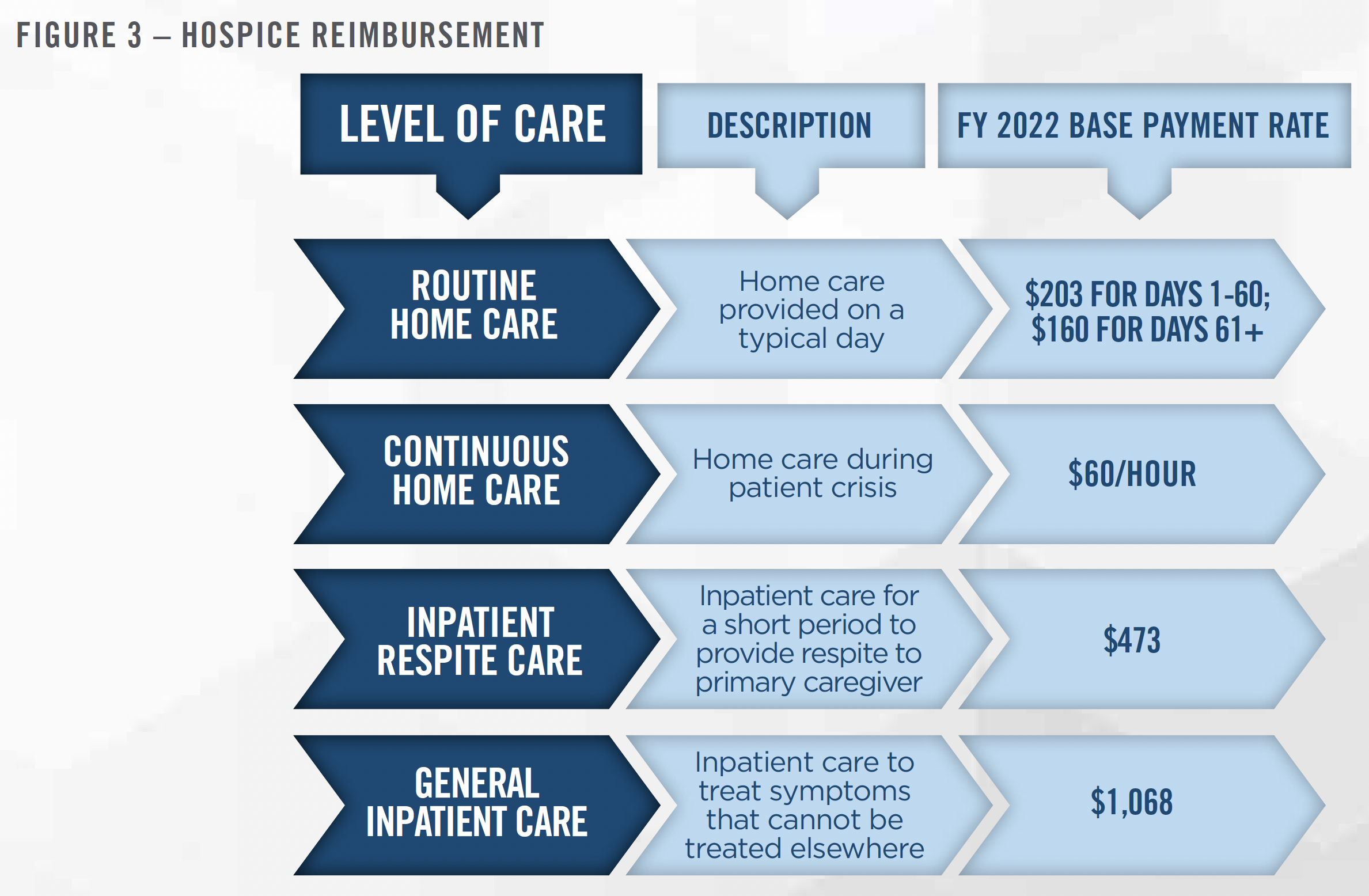

![]()
![]()
![]()
![]()
![]()
![]()
![]()
![]()
While there has been steady transaction activity in the home health and hospice market in recent years, the market remains relatively fragmented. As presented in Figure 4, the top 10 home health providers represented 26.6 percent of the national market share, while the top 10 hospice providers represented 19.0 percent of the national market, based on claims data as of 2020.[5]
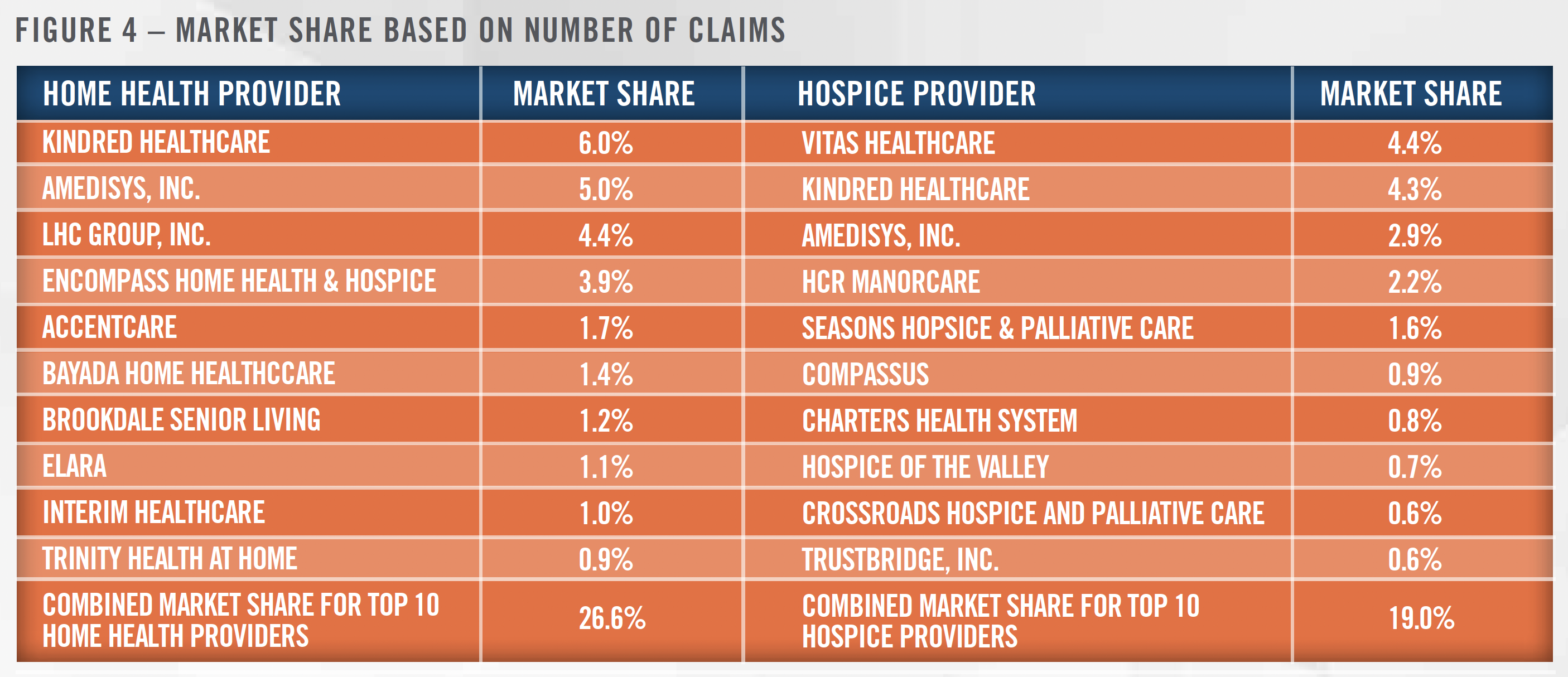

Many of the largest operators in the country are publicly traded corporations deriving some portion of their revenue from the provision of home health and/or hospice services. In particular, Kindred Healthcare offers both home health and hospice services, and was part of a transaction which combined its home health business with Curo Health Services before being acquired by Humana and two private equity investors. Amedisys, LHC Group, Encompass, Brookdale Senior Living, and VITAS (subsidiary of Chemed Corporation) are all publicly traded corporations. Brookdale Senior Living sold its home health business to HCA Healthcare, Inc. in 2021. In addition to the public operators, many of the largest home health and hospice platforms listed above are backed by private equity sponsors.
![]()
![]()
![]()
![]()
![]()
![]()
![]()
![]()
COVID-19 and Higher Acuity
COVID-19 accelerated many trends in healthcare, including the shift to lower cost settings such as the home. Due to the safety and convenience of receiving care in the home as opposed to an institution, the desirability of home health increased during the pandemic and operators expect this trend to continue.
One of the hardest hit sectors of the healthcare industry during COVID has been nursing homes and other types of long-term care facilities for seniors. The OIG reported that nearly 40 percent of Medicare beneficiaries in nursing homes were diagnosed as either having COVID-19 or likely having COVID-19 in 2020, and overall mortality increased from 17 percent in 2019 to 22 percent in 2020. Given the substantial risk faced by individuals at these facilities, the benefits from home health were amplified.
Recent improvements in technology and care provision standards have enabled home health providers to admit higher acuity patients. The largest operators in the space have focused on initiatives including “aging-in-place”, “hospital-at-home” and “SNF-at-home” models involving caring for higher acuity patients in the home setting. The increasing prevalence of value-based care arrangements, and the rapid growth of Medicare Advantage, are expected to contribute to an acceleration of these trends. A recent example is Amedisys, Inc.’s acquisition of Contessa Health in June of 2021, which significantly expanded Amedisys’s footprint in the hospital-at-home, SNF-at-home, and palliative care space. This transaction, and the ability to provide care to higher acuity patients, increases the addressable market for Amedisys (and other home health providers) from $44 billion to $73 billion.[6] There has also been a push to provide more dialysis in the home, which could provide an additional avenue for growth for home health companies.
Staffing Shortage and Telehealth
While COVID-19 has directly and indirectly contributed to higher demand for home health, the pandemic has caused staffing problems, resulting in a shortage of providers and higher costs to provide care. Fewer nurses and other providers, due to burnout from work related stress and longer hours, as well as forced quarantine periods following infection or exposure to COVID-19, is driving the shortage relative to the demand. In addition, clinical providers are seeking more flexibility and work-life balance. The shortage of providers leads to a higher reliance on contract labor, which typically is more expensive compared to the cost of employed clinicians. Reducing turnover and securing adequate supply of clinicians will continue to be a focus for home health providers in the coming years.
We’re already seeing developments such as hemodynamic monitoring, noninvasive lab tests, ambient monitoring, ultrasounds in the home and more. There’s even voice technology that can detect changes in the patient’s voice to predict possible COPD exacerbation and other devices that can help detect falls — or even predict that a fall might happen, helping us work to prevent it.[10]
Operators can mitigate some of the negative impacts of labor constraints through telehealth. Telehealth has been reshaping the home health landscape as providers increase their use of technology to provide better care for patients at lower costs. Some of the most common applications of telehealth in the home health space include patient monitoring, medication management, image sharing technology, mobile apps for telehealth consultations with providers, and population health.[7] The ability to provide these services to patients in their homes without sending a provider to the patient represents a significant opportunity for home health agencies to reach more patients, particularly in rural areas or markets with a shortage of providers. Similarly, with recent Medicare expansions in reimbursement for telehealth services,[8] home health will increase in prominence as part of the continuum of care after discharge. CMS recently made permanent some of the changes to telehealth regulations that were put in place during the pandemic, which should enable continued growth of telehealth services within the home health space. Given the steep Medicare penalties associated with patient readmissions, we have observed many health systems utilize home health as a means to treat patients before they require hospital care. Providers are combining chronic care management with remote patient monitoring to provide costeffective treatment to patients with ongoing serious health conditions. Examples abound of increasing adoption (including among physicians) of remote monitoring devices in the patient home in order to improve care.[9] Telehealth utilization has also increased in response to the COVID-19 outbreak in the United States. Telehealth and home health are both viewed as effective methods of keeping certain patients out of the hospital thereby freeing up capacity for dealing with COVID-19.
Consolidation and Value-Based Care
Heading into 2022, industry participants expect continued consolidation as smaller providers are acquired either by large publicly traded operators or private equity sponsored organizations. The main driver of this expected wave of consolidation is the ongoing impact of COVID-19, as well as disruption caused by PDGM. In addition, larger operators may be better able to participate in value-based care arrangements.
An additional factor that is likely to drive further transaction activity and consolidation is the recent nationwide expansion of the Home Health Value-Based Purchasing Model (“HHVBP”) by CMS. HHVBP makes payment adjustments to Medicare-certified home health agencies based on quality metrics reported by the agency, with maximum adjustment of up to 6 percent in 2021. The model has been implemented in nine demonstration States over the last several years, and will be implemented nationwide beginning in 2023, with the maximum adjustment capped at 5 percent. The ability to earn upward payment adjustments through the provision of quality care is likely to attract additional investment in the space, as the industry continues to shift toward value-based payment models.
More broadly, the shift to value-based care across the healthcare continuum will likely lead to further demand for home health as the increasing prevalence of capitated payment models and population health initiatives incentivizes groups of providers to lean more heavily on lower-cost settings, when clinically appropriate, for patient care. Home health can be utilized to reduce the cost of post-acute care by keeping patients out of expensive facilities and institutions, as well as to better maintain health and monitor chronic conditions, which could lower emergency room utilization and reduce the overall cost burden associated with these conditions. In general, larger providers are better able to participate in these models given their scale and access to resources and technology. We expect this will contribute to further consolidation.
![]()
![]()
![]()
![]()
![]()
![]()
![]()
![]()
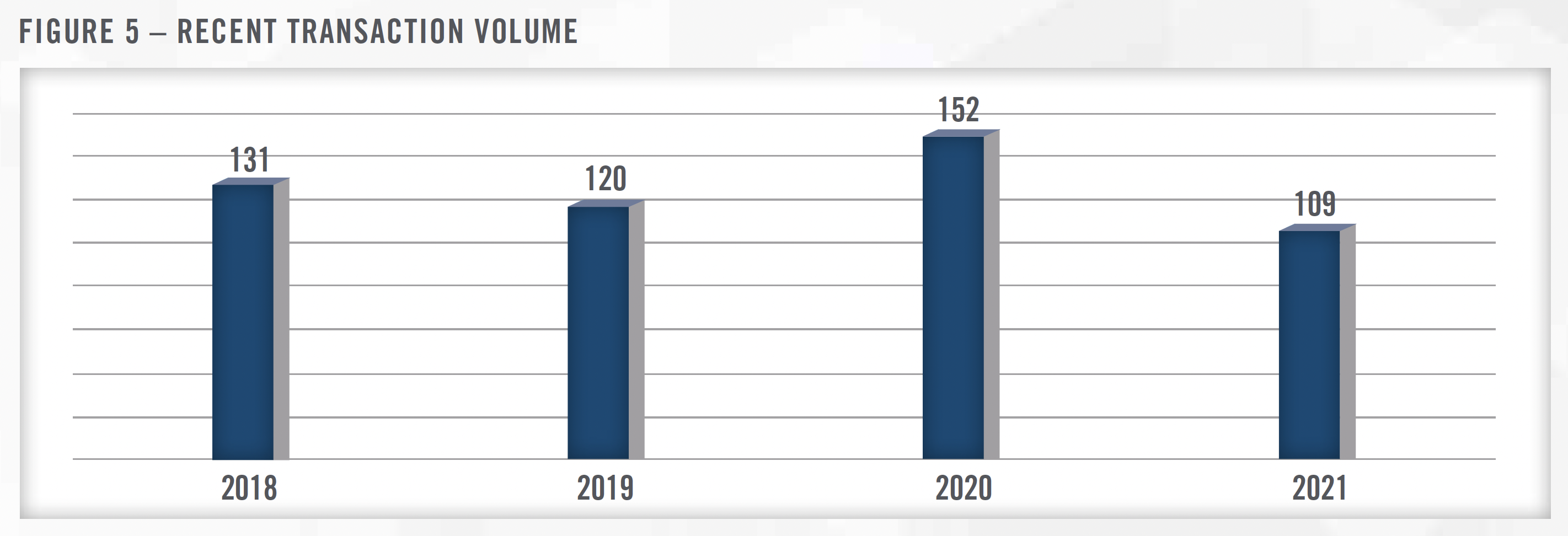

Transaction activity remains robust in the home health and hospice market, with larger operators increasing their footprint and adding new services lines through acquisition. The figure above, which is based on data from Irving Levin, DealStats, and Mertz Taggart, illustrates that, even during the pandemic year of 2020, transaction activity remained elevated as the pandemic highlighted the benefits of home health. Based on publicly available transaction data and our experience working on many home health and hospice transactions, smaller agencies are typically transacting in the 4x to 8x EBITDA range (Figure 6). Larger providers with a regional footprint and/or higher acuity services are transacting well into the midteens in terms of EBITDA multiples. These elevated multiples are being driven by competition between private equity buyers and large strategic operators, both of whom are well capitalized and seeking to take advantage of the favorable demographics and reimbursement trends in the space.
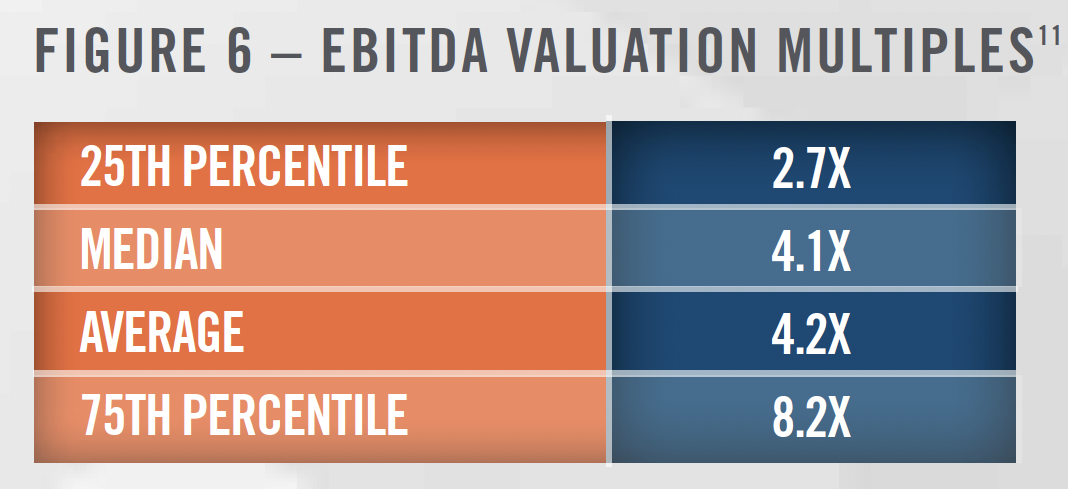

As illustrated in Figure 7, there have been many notable, transformative transactions in recent years. In addition to large publicly traded home health operators, several private equity firms have established large, regional or national organizations, and health systems and payors like UnitedHealth and Humana are heavily involved in the space. As value-based care increases in prominence and importance within the healthcare industry, we expect more integration of the care continuum with payors and health systems bringing more home health services into their networks.
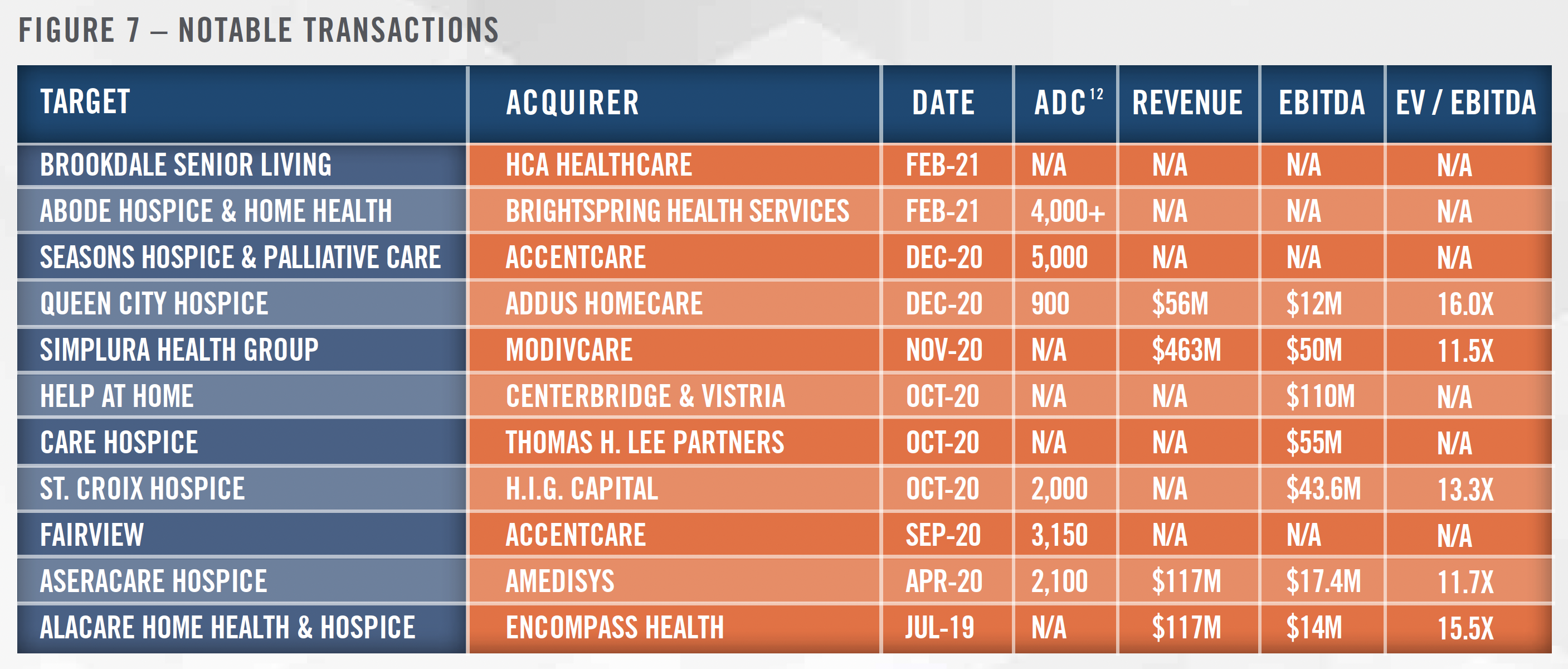

![]()
![]()
![]()
![]()
![]()
![]()
![]()
![]()
Due to strong growth outlooks, the stock of publicly traded operators in the space is exhibiting high valuation multiples, as presented in Figure 8. As discussed above, the industry is poised to benefit from a number of trends that will contribute to high growth rates in the coming years, and this expectation is reflected in the growth estimates for publicly traded companies in the space (Figure 9).
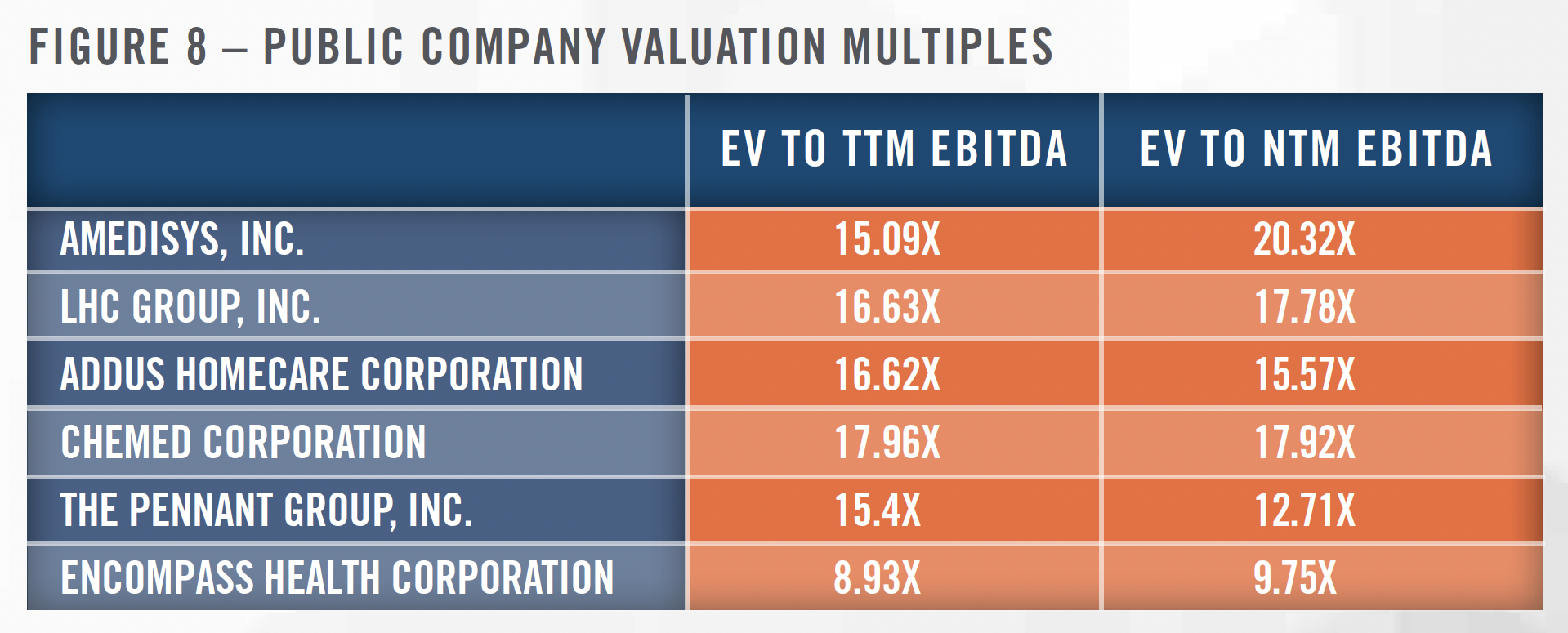



Dan Levin, CFA, ASA is a Director in our Denver office. Dan can be reached at (303) 566-3177 or DLevin@hcfmv.com.
[1] Medpac.gov
[2] CMS analyzed healthcare expenditures based on funding sources, as well as site of service; therefore, healthcare expenditure data for home healthcare includes hospice spending that takes place in the home of the patient but does not include hospice spending taking place in a nursing facility, hospital, or any other clinical setting.
[3] https://www.healthaffairs.org/doi/full/10.1377/hlthaff.2019.00529
[4] Medpac.gov
[5] https://risk.lexisnexis.com/insights-resources/research/top-100-hospice-and-home-health
[6] https://investors.amedisys.com/news/news-details/2021/Amedisys-Announces-Agreement-to-Acquire-Contessa-Health-Creating-a- Comprehensive-Home-Healthcare-Delivery-Platform/default.aspx
[7] https://www.healthcaredive.com/news/home-health-agencies-expanding-rolling-out-more-telehealth-services/568320/
[8] https://mhealthintelligence.com/news/cms-finalizes-new-reimbursement-rules-for-remote-patient-monitoring
[9] https://mhealthintelligence.com/news/current-and-future-doctors-are-more-than-ready-to-use-mhealth-wearables
[10] https://homehealthcarenews.com/2021/12/2022-executive-forecast-time-to-throw-out-the-old-home-health-playbook/
[11] DealStats 12 ADC = Average Daily census
